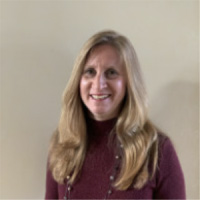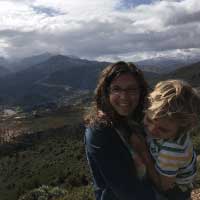Expert Analysis: A Guide to NP Insurance Reimbursements
Find NP Schools
For the 2023-2024 academic year, we have 140 NP schools in our database and those that advertise with us are labeled “sponsor”. When you click on a sponsoring school or program, or fill out a form to request information from a sponsoring school, we may earn a commission. View our advertising disclosure for more details.
“We do the exact same visits, and we code and document the exact same way as the physicians, but when it comes to the insurance companies reimbursing us, there’s a discrepancy. Each insurance company is different, but many follow Medicare, which reimburses at 85 percent if the nurse practitioner bills under their own NPI number.”
Dr. Alycia Bischof, Central Clinical Site Coordinator, University of Pennsylvania School of Nursing
Nurse practitioners are educated and trained to perform many of the same job duties as physicians, including physical examinations, ordering and interpreting tests, prescribing medications, managing a patient’s overall health, and acting as primary care providers.
However, despite the quality of care and level of expertise being equal, nurse practitioners are not reimbursed by insurance at the same rate as physicians.
Laws around reimbursement rates for nurse practitioners have evolved over the years but have yet to find parity, apart from a couple of states.
There have been loopholes where practices could receive full reimbursement from Medicare if the bill was submitted as “incident to” under the name of a supervising physician. Dr. Alycia Bischof, the central clinical site coordinator at the University of Pennsylvania School of Nursing, adds, “The rules for ‘incident to’ have changed. For inpatient care, you can no longer bill ‘incident to.’ You have to bill “split share” instead. Whoever does more than 50 percent of the care is who it gets billed under.”
She continues, “I’ve heard from nurse practitioners across the country that they’ve lost their jobs to physicians now because the employers want the 100 percent reimbursement, and they don’t want to take the decrease because they have to bill ‘split shared.’ It hurts the professional practice that we are not reimbursed for the full amount.”
The pay disparity is particularly egregious in communities where nurse practitioners are the only healthcare providers, which is often the case in rural areas. “Reimbursement affects the overall cost to run a clinic. Some nurse practitioners are moving to concierge medicine in rural communities, where patients pay a membership fee for their care. By doing this, they’re moving away from billing insurance companies, and patients are buying their services direct,” says Dr. Bischof.
Despite the pay disparity, there are many ways nurse practitioners can ensure that they are reimbursed to the fullest extent possible. The administrative side of practice and billing for services is likely not why anyone pursued this field, but having a firm grasp on how to do it efficiently and correctly is essential to any thriving healthcare setting.
Keep reading to learn from insurance billing expert Dr. Bischof on what every nurse practitioner should know to reduce the burden of this workload.
Meet the Expert: Alycia Bischof, DNP, APN, CPNP-PC

Dr. Alycia Bischof is the central clinical site coordinator for the University of Pennsylvania School of Nursing. She is dedicated to mentoring the next generation of nurse practitioners and works hard to help them develop their clinical skills and business acumen.
Dr. Bischof is passionate about cultivating relationships between preceptors and students to ensure they get the best possible clinical opportunities. She teaches documentation and coding skills to students and faculty alike. Her most recent publications include “Understanding the 2021 Evaluation and Management Coding Guidelines,” published in The Nurse Practitioner, and “Post COVID-19 Reimbursement Parity for Nurse Practitioners,” published in Online Journal of Issues in Nursing.
Keys to Getting Reimbursed As A Nurse Practitioner
“I tell my students my goal is to get you out of the office by six o’clock each night with your charts done,” says Dr. Bishof. For years she has been training the next generation of nurse practitioners on the best ways to get their administrative work finished quickly and efficiently to have a better work/life balance. “So many people tell me it takes them two, three, or four hours after work to finish their documentation. This creates a lot of burnout, especially for newer staff coming in.”
Here are Dr. Bischof’s best practices nurse practitioners need to know in insurance that will help reduce burnout and ensure the highest reimbursements possible.
Document Everything
The key to getting paid is to document everything: “If you don’t document it, then you can’t bill it,” says Dr. Bischof. Unfortunately, the rules on how and what to document are constantly evolving, but, for the most part, it boils down to one specific type of documentation. “You need to document your medical decision-making. That’s what it comes down to. Patient history and the physical exam are certainly important, but it’s not where the money’s coming from. Your documentation needs to show your medical decision-making.”
To do this, a nurse practitioner needs to describe the patient’s presentation, which diagnostic or management options were considered, all the data that was analyzed, including charts, labs, and tests, and what complications might arise from the patient’s condition and the management or procedure options considered.
Pay Attention to Higher Case Complexity
Not all patient visits will bill at the same reimbursement rate. The higher the complexity, the higher the reimbursement. However, this has to be carefully documented in the chart to be recognized by the insurance company. “If somebody comes in with a sunburn, very little medical decision-making is needed. You tell them to put some aloe on it, and they go out the door. It’s very straightforward, with a low level of complexity and a lower payment from the insurance. Moderate complexity might look like somebody with a runny nose and a high fever. You look in their ears, and they are infected. Now they need an antibiotic. There’s a higher complexity because not only is the patient more acute, but I also need to intervene and prescribe a medication that could potentially have side effects,” explains Dr. Bischof.
She continues, “A high complexity might look like someone having a hard time breathing and having an asthma attack. Now I’m evaluating the asthma, ordering more tests to find out if it is just asthma, doing breathing treatments in the office, and may ultimately send them to the hospital because we can’t control it. That’s a much higher complexity. Our notes need to reflect all of that.”
Use Templates and Learn Dot or Macro Phrases
Documentation can take a lot of time and effort, but there are shortcuts: “I can put a premade template into the chart with the questions I know I’m going to ask a patient and what I’m going to cover. Sure, it is generic for that patient, but I can adjust it while I’m in the room doing the exam. It cuts my time in half because I already have most of it done,” shares Dr. Bischof.
Thankfully, most software in this industry has methods to streamline this process. “Every medical electronic record management (ERM) software I’ve encountered uses dot phrases or macro phrases that auto-populate text for you, such as patient instructions or basic exam info,” advises Dr. Bischof. “If I see somebody with acne, I tell them the same directions every time. In their record, I can write ‘dot acne,’ and my acne instructions are immediately in the chart. Then I go in and personalize it, but I ended up not typing the whole thing. This way, the patient can leave with instructions after the visit as opposed to me typing it at 10 o’clock at night after they have already left.”
Learning the dot or macro phrases already provided by the EMR takes time, as does writing ones for visits each nurse practitioner does regularly. However, this tedious work does pay off and can significantly streamline the documentation and billing process. It also helps ensure that the proper documentation is recorded, as these prepopulated notes include all the necessary information for billing purposes.
Medical Coding Education Is Critical
Most healthcare facilities and clinics have billing specialists who review documentation and assign a medical code for billing purposes. Despite this additional administrative help, knowing what codes are typically used and what documentation may be necessary for a particular code is critical for nurse practitioners and essential in independent or solo practice.
“All nurse practitioners should be attending some kind of coding education. My students have to hear me at least three times a year. I would add more if the curriculum allowed it,” says Dr. Bischof. “Many practitioners are coming out of school not knowing anything about coding or documentation or why it’s important. They think it’s fine to say ‘ear infection’ in their notes. Well, that’s not appropriate, and you need to learn the appropriate language that coding and billing actually require.”
In closing, she advises, “If they’re not getting it in school, then when they graduate, they need to attend a seminar or conference and at least get the basics down. It’s a different language. You need to know how to take what’s in a chart and put a number to it. Coding is all about matching your diagnosis, your treatment, what you did, and why you did it to the correct numbers.”

Kimmy Gustafson
WriterAmong her many diverse writing endeavors, Kimmy Gustafson has also lent her expertise to NPSchools.com since 2020, providing insightful and engaging content about the significant role of education in shaping our future generations of nurse practitioners. Many of her pieces include interviewing experts on timely topics such as healthcare workplace violence and moral distress.
Kimmy has been a freelance writer for more than a decade, writing hundreds of articles on a wide variety of topics such as startups, nonprofits, healthcare, kiteboarding, the outdoors, and higher education. She is passionate about seeing the world and has traveled to over 27 countries. She holds a bachelor’s degree in journalism from the University of Oregon. When not working, she can be found outdoors, parenting, kiteboarding, or cooking.